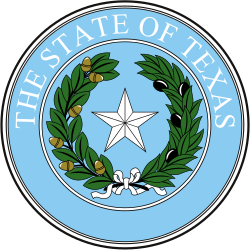Background
Republicans won a majority of seats in the 1869 elections, and alongside their control of the House of Representatives and governorship, enacted a number of Reconstruction policies, including the ratification of the 14th and 15th amendments to the U.S. Constitution, a requirement for readmission to the Union and the resumption of congressional representation. They also elected Republicans Morgan C. Hamilton and James W. Flanagan to the U.S. Senate. On March 30, 1870, Texas was readmitted to the Union.
Following the state's readmission, the legislature turned towards state policy in a special session. The Radical Republican majority dramatically reshaped the state government, centralizing power, raising taxes, and overhauling the state's education system. Many of the state's new policies, especially the higher taxes and rights granted to freedmen, enraged the state's White population. [1]
Rump Senate
The legislature created a state police force to address the rampant crime across the state, much of it perpetrated by white supremacist groups such as the Ku Klux Klan. [1] The passage of this bill proved especially controversial, prompting conservative Senators to break quorum, leaving only 15 Radical Senators unable to pass legislation. The state then arrested the missing Senators, but only four were brought back to the chambers, enough to re-establish quorum. What became known as the "Rump Senate" then passed the bill. [2] The education system became far more centralized, although it was segregated over the objections of the state's Black legislators. They also debated policies such as railroad construction and Native American removal.
This page is based on this
Wikipedia article Text is available under the
CC BY-SA 4.0 license; additional terms may apply.
Images, videos and audio are available under their respective licenses.

